November 1, 2024 · 7 min read
The Importance of Real-Time Collaboration in Project Meetings

Shaimaa Badawi
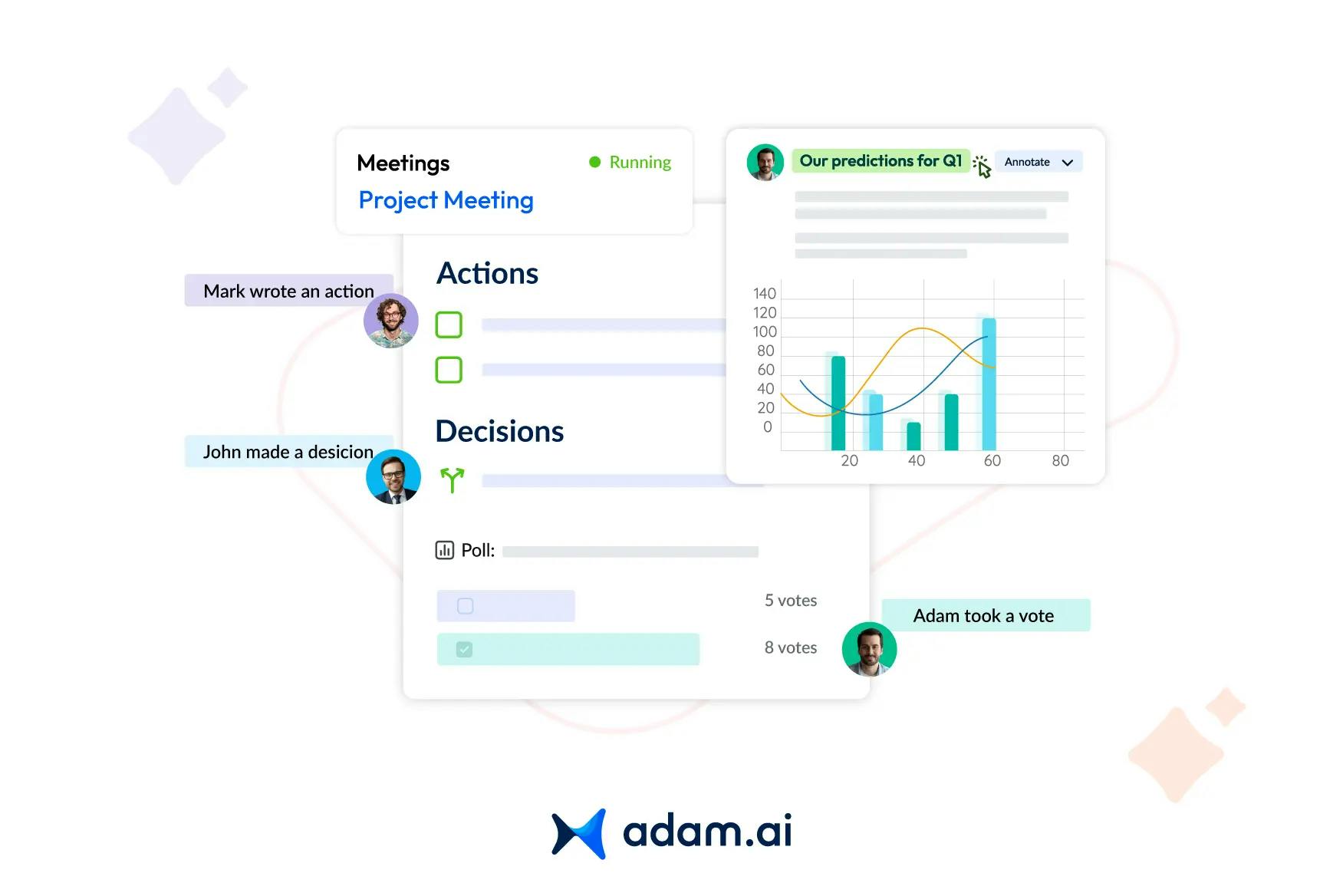
The way we collaborate defines how we succeed, and in fast-paced projects, nothing is more critical than working together in real-time. Imagine eliminating delays, aligning teams instantly, and seeing ideas take shape during the meeting itself. Real-time collaboration isn’t just a trend; it’s the backbone of efficient and innovative project management. This article dives into why it’s a game-changer, the challenges teams face, and how modern tools are redefining the way we collaborate.
What is real-time collaboration in project meetings?
Real-time collaboration in project meetings refers to the simultaneous, synchronized efforts of team members to work together on tasks, share updates, and make decisions without delays. This interaction happens live, allowing participants to exchange ideas, feedback, and updates instantly, regardless of their physical location.
Unlike traditional asynchronous collaboration, where actions and responses occur sequentially, real-time collaboration ensures that everyone is aligned and actively engaged at the same time. It leverages modern tools like video conferencing, shared documents, and collaborative whiteboards to create a dynamic and interactive environment where decisions can be made swiftly, and tasks progress seamlessly.
For example, a project team working on a presentation can simultaneously edit slides, update visuals, and add notes while discussing ideas over a video call. This instant communication and task execution eliminate delays and foster a more cohesive and productive workflow, making it indispensable for fast-paced, hybrid, or remote teams.
Why is real-time collaboration crucial for project success?
Real-time collaboration is essential for project success because it accelerates decision-making, enhances communication, and ensures team alignment. The ability to exchange ideas and feedback instantly can significantly impact timelines, productivity, and overall outcomes. Here’s why it matters:
1. Faster decision-making
Real-time collaboration eliminates the waiting periods associated with traditional methods like email or sequential feedback. Teams can discuss and resolve issues immediately, ensuring projects stay on track and meet critical deadlines.
2. Enhanced transparency and communication
By providing a platform where all team members can view updates, share insights, and discuss progress, real-time collaboration reduces misunderstandings and ensures everyone is informed. This fosters a transparent work culture and minimizes the risk of knowledge silos.
3. Boosted productivity
Teams working simultaneously can achieve more in less time. Real-time collaboration tools streamline workflows, allowing multiple contributors to work on the same project without bottlenecks or duplicated efforts.
4. Improved work quality
Instant feedback and collaborative problem-solving enhance the quality of deliverables. When everyone is aligned and actively engaged, errors are reduced, and the team can focus on producing their best work.
5. Stronger team cohesion
Real-time interaction strengthens relationships among team members. It fosters trust, builds understanding, and encourages diverse perspectives, which are critical for innovative problem-solving and goal achievement.
What are the main challenges of achieving real-time collaboration?
Achieving real-time collaboration comes with its set of challenges, which can hinder its effectiveness if not addressed. Here are the main challenges and their impact:
- Time zone differences: For global teams, coordinating schedules to collaborate in real time can be daunting. When work hours don’t overlap, it leads to delays and affects the rhythm of teamwork.
- Tool usability and adoption: While real-time collaboration tools are essential, not all team members may find them intuitive or easy to use. Resistance to adopting new tools can disrupt workflows and reduce efficiency.
- Distractions and notification overload: Real-time updates and notifications, while helpful, can also be overwhelming. Constant pings and messages may lead to a loss of focus, reducing individual productivity.
- Collaboration preferences: Not all team members thrive in real-time settings; some may prefer asynchronous collaboration to process information or contribute at their own pace. This misalignment can create friction within teams.
- Security concerns: With shared access to documents and instant communication, the risk of data breaches and unauthorized access increases. Maintaining security while ensuring accessibility becomes a delicate balance.
- Technical barriers: Poor internet connectivity or software glitches can disrupt real-time collaboration sessions, especially in remote settings, causing delays and frustration.
How do real-time collaboration tools enhance project meetings?
Real-time collaboration tools significantly enhance project meetings by creating a dynamic, interactive, and efficient environment for teams to work together. They streamline communication, foster engagement, and optimize decision-making, leading to better meeting outcomes. Here’s how:
1. Instant communication and feedback
Real-time tools, like chat features or shared documents, allow team members to share updates, ideas, and feedback instantly. This eliminates delays and ensures everyone is aligned, leading to faster resolutions during meetings.
2. Centralized information
These tools provide a unified platform where meeting agendas, notes, and updates are accessible to all participants. This reduces confusion, prevents version mismatches, and keeps the team focused on shared goals.
3. Enhanced engagement
Features like live polls, whiteboards, and collaborative editing foster active participation. These interactive elements ensure that every team member’s voice is heard, increasing engagement and inclusivity during meetings.
4. Improved decision-making
Real-time tools facilitate immediate access to relevant data, enabling participants to make informed decisions on the spot. This minimizes follow-ups and accelerates the execution of meeting outcomes.
5. Seamless integration with workflow
Many tools integrate with project management platforms, allowing action items and decisions from meetings to be directly linked to ongoing tasks. This continuity ensures that meeting outcomes translate into tangible progress.
What are the best practices for fostering real-time collaboration?
Fostering real-time collaboration requires intentional strategies to ensure efficiency, engagement, and alignment among team members. Here are the best practices to implement:
- Choose the right collaboration tools: Select tools that fit your team's needs, such as shared documents, video conferencing platforms, or digital whiteboards. Look for features like task tracking, instant messaging, and seamless integration with existing workflows.
- Establish clear objectives: Define the purpose and goals of the collaboration effort. Clear objectives help team members stay focused and aligned, minimizing wasted time and effort during real-time interactions.
- Encourage open communication: Create an environment where team members feel comfortable sharing ideas and feedback. This can be achieved by fostering a culture of inclusivity and valuing diverse perspectives.
- Set expectations and guidelines: Establish norms for participation, response times, and meeting etiquette. This ensures that everyone understands their roles and responsibilities during real-time collaboration.
- Prioritize synchronous communication wisely: Use real-time collaboration for critical discussions or immediate problem-solving, and balance it with asynchronous methods for tasks that require deep focus or flexibility.
- Leverage centralized platforms: Consolidate communication, document sharing, and task management on a single platform. A centralized hub eliminates the need for constant switching between tools, boosting productivity.
- Provide training and support: Equip your team with the skills to use real-time collaboration tools effectively. Offer tutorials, workshops, or help desks to address any technical challenges or hesitations.
- Evaluate and iterate: Regularly assess the effectiveness of your collaboration practices. Gather feedback from team members and refine your approach to address any challenges or inefficiencies.
How does adam.ai simplify real-time collaboration for project managers?
adam.ai simplifies real-time collaboration for project managers by providing an all-in-one meeting management platform that enhances communication, organization, and productivity throughout the meeting lifecycle. Key features include the following:
1. Real-time content collaboration
During meetings, participants can engage through interactive features such as emoji reactions, instant feedback via comments, and mentions to draw attention to important topics. This fosters a lively conversation and enhances team engagement.
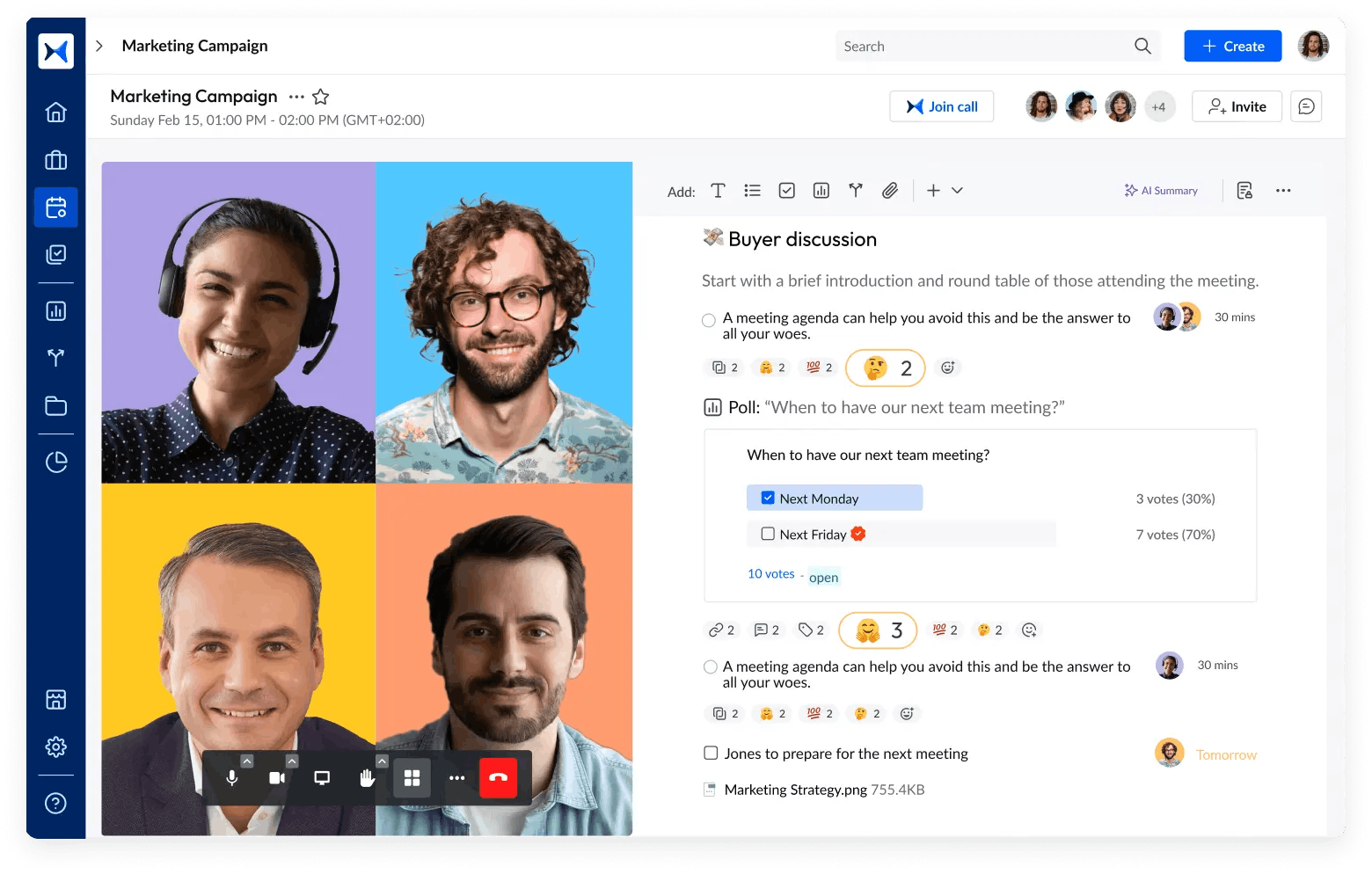
2. Action management and tracking
The platform allows project managers to assign tasks, set deadlines, and monitor progress within a dedicated actions page. This ensures accountability and streamlines follow-ups, as all tasks are documented and easily accessible.
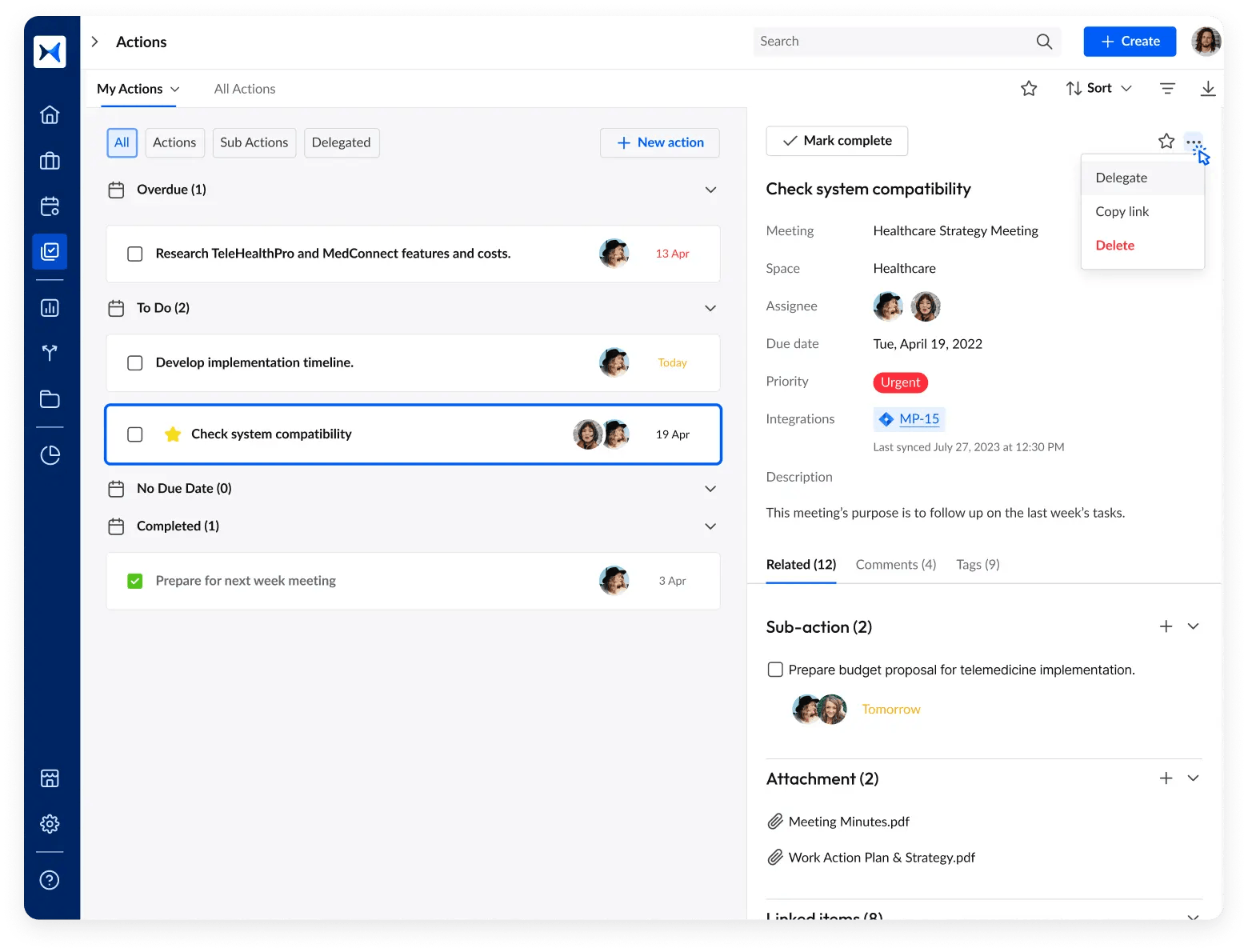
3. AI-powered meeting assistance
adam.ai's intelligent assistant, iAdam, automates note-taking, suggests agendas, summarizes discussions, and identifies action items. This reduces manual effort and ensures that critical information is captured accurately.
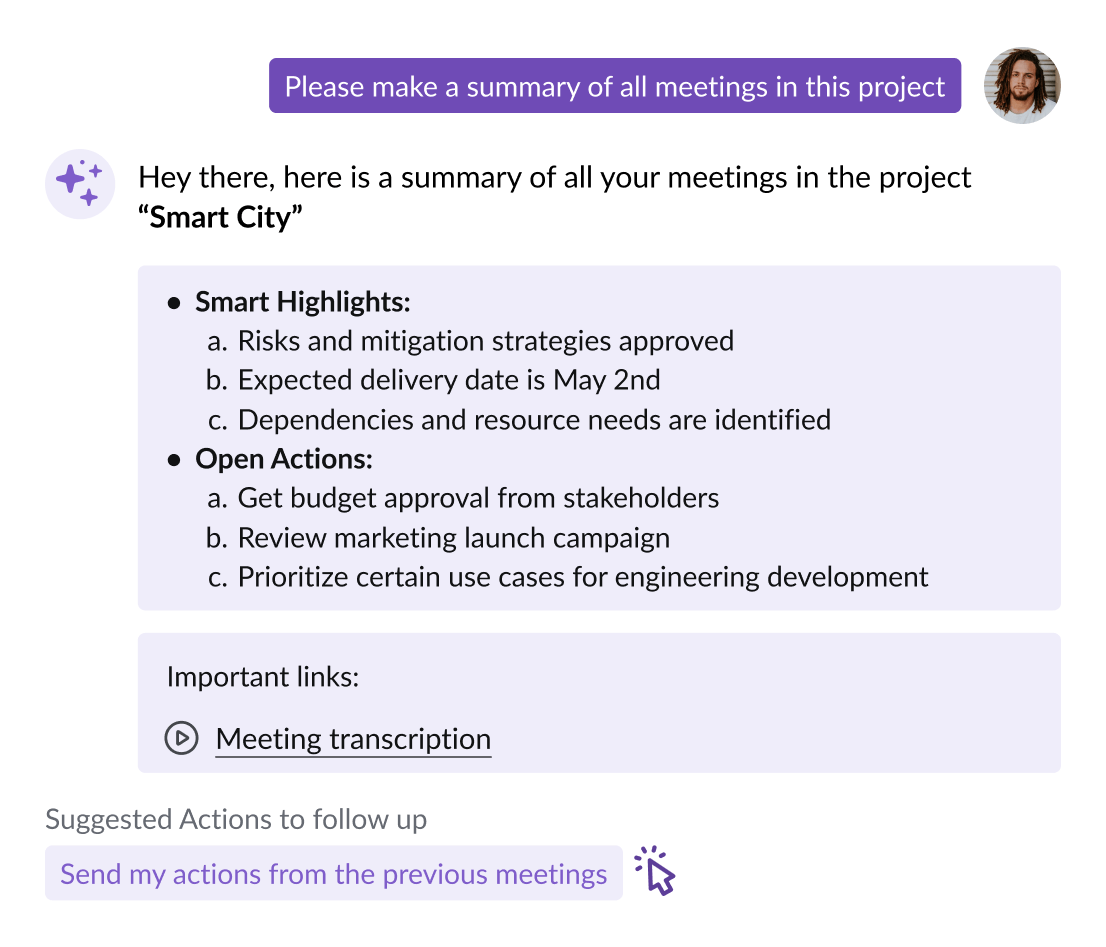
4. Integration with existing tools
The platform integrates seamlessly with project management and communication tools, consolidating workflows and reducing the need to switch between applications. This integration enhances efficiency and keeps all project-related information in one place.
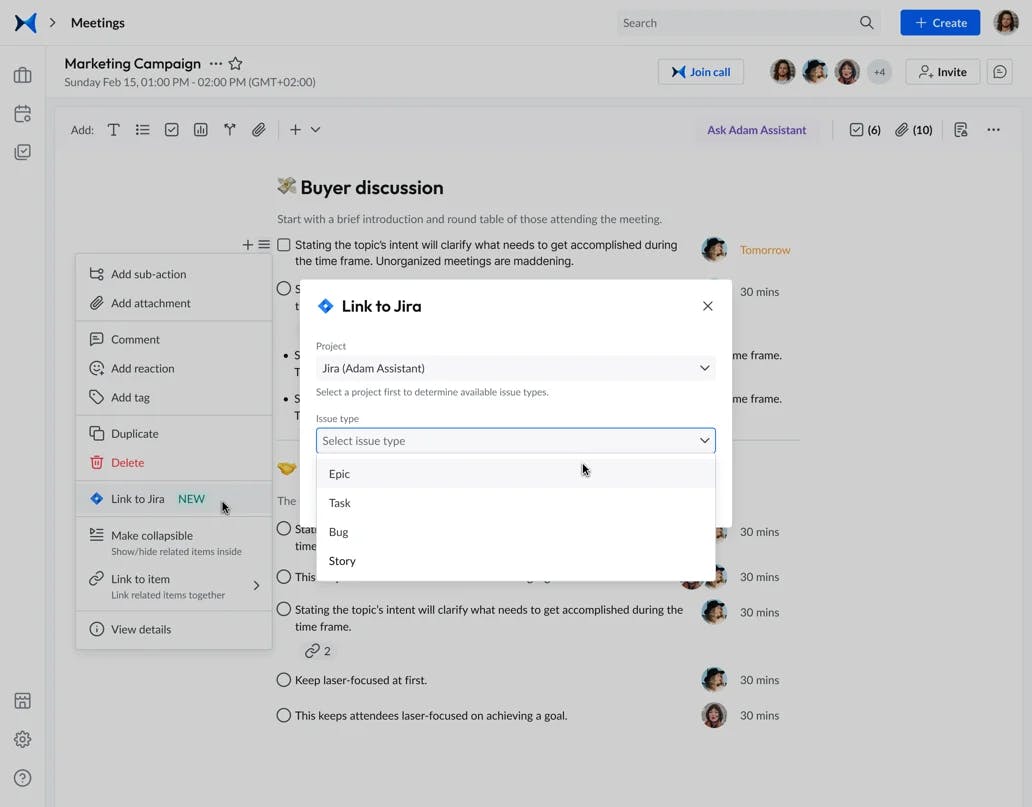
5. Personalized dashboards and insights
Project managers can access dashboards that provide insights into meeting outcomes, track actions, decisions, and other meeting content, facilitating data-driven decision-making and keeping projects on track.
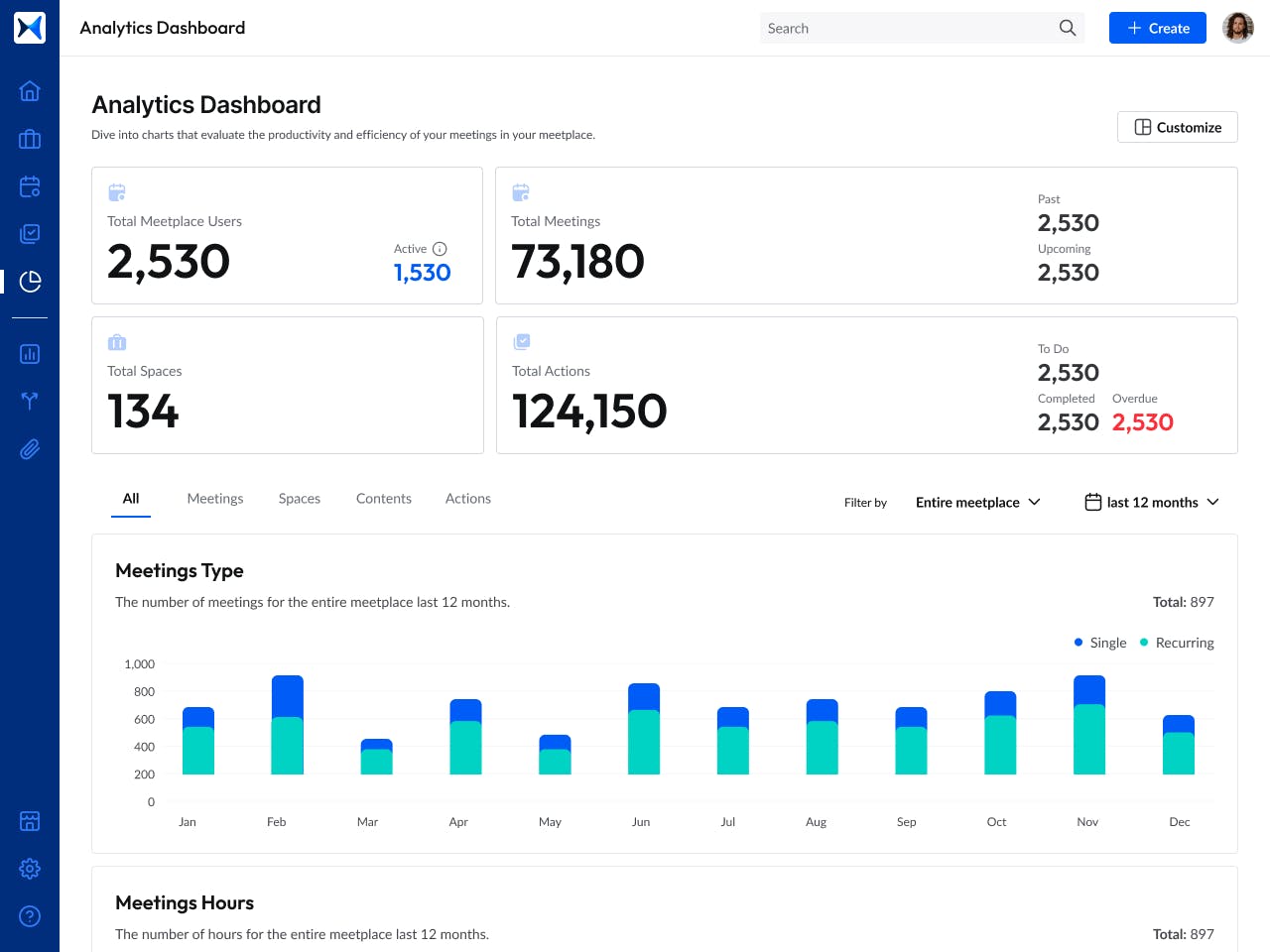
Transform how you conduct critical meetings—From meticulous preparation to effective execution and insightful follow-up, adam.ai integrates comprehensive analytics, full customization, and intuitive interfaces with powerful meeting management tools.
Easy onboarding. Enterprise-grade security. 24/7 dedicated support.
The bottom line
Modern tools have transformed the possibilities of real-time collaboration, allowing teams to work seamlessly, no matter where they are. By leveraging these technologies, organizations can boost productivity, drive creativity, and achieve faster, more impactful results.
And while there may be multiple solutions available, here is why adam.ai is the meeting management software platform you can trust:
- adam.ai is one of Atlassian Ventures' portfolio companies.
- In the meeting management software category on G2, adam.ai has been ranked a leader and a high performer for successive quarters in the past years.
- adam.ai has been included in the Forrester Report in the AI-enabled meeting technology landscape.
- adam.ai is trusted and used by powerful teams and organizations worldwide for all types of critical meetings, like board, committee, project management, and business development meetings.
- And most importantly, adam.ai integrates with your existing workflow, is SOC2 compliant, provides dedicated support and success, and has a free trial option.
Subscribe to adam.ai blog
Stay ahead with the latest insights—get our newest blog posts, tips, and updates sent straight to your inbox.